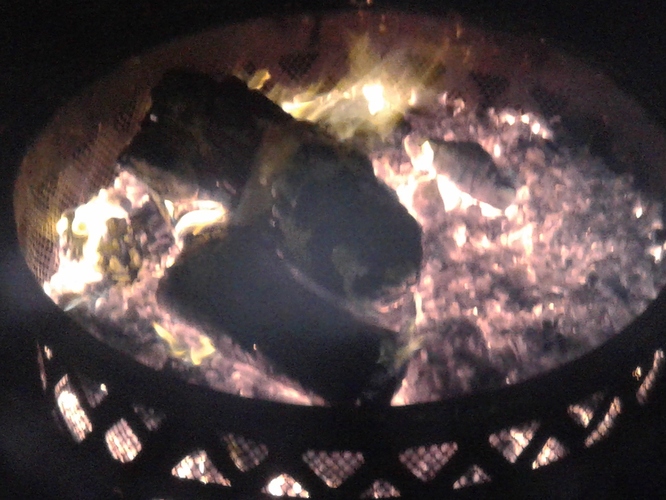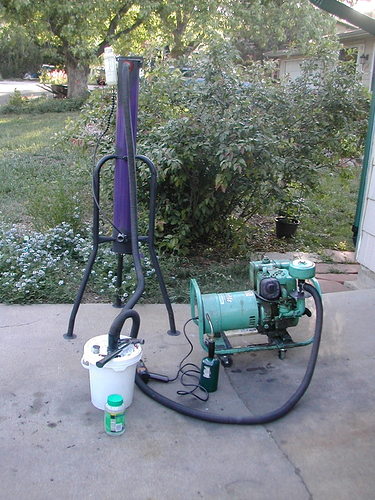Thanks Don, I forgot those video. Gonna try this for sure. This is the easy way.
Joep,
Kristijan’s downdraft charcoal gasifier is under topic “Mercedes-Benz E230 vol. 2, charcoal powered” beginning after post 364
When ever we have a fire in the back yard enjoying the evening, cooking foods ect. I end up with a bed of coals. I have a large metal container with a air tight lid. I shovel the coals into it and seal it. The next day I have charcoal ready to screen the ash away and then size and bag. By just using an open pit fire, simple and fun. What better way to finish a day of DOW then around a fire with family and friends making more charcoal. No machinery needed. Just a metal fire pit, shovel, screen to classify the charcoal, storage containers, bags for the charcoal, and a charcoal gasifer. I like @KristijanL down draft design. But instead of a box fire tube I am making a WK style fire tube. In fact I am going to rebuild the old WK fire tube that @Wayne built in 2012 that I replaced in my truck gasifer. My cross draft is not very efficient and is to heavy and large for my liking. I love the small compact size that Kristijan Leitinger has built for his cars and they are stealthily in design.
Bob
The place where you live (Verona Italy) gives you the opportunity to build a nice small CHP system, solving your low consumption requirements and make you able to run on charcoal.
You’l need heat for warm water, cooking and house heating anyway, then use wood to do just that and recover charcoal to run your engine ?
In my experience, wood to charcoal yields about 30% charcoal with a retort sytem and about 17% with an kiln system.
Small generators run 1 Kwh with about 0,5 kg charcoal
It all depends on how easy you want it to be, how good your skills are to build DIY
In your case , the only problem is the small size, but that also makes the decision easier and the work less.
The downdraft charcoal gasifier is something I’ve been pondering. Now I find out about KristijanL’s build and go look it up. Now my brain is non-functional. You guys are great builders but really need to work on staying on a topic. Anyway, when the smoke stops coming out of my ears I’ll try and sort through it again.
0,5 kg of charcoal per kw/h? On load? So i should consume the half with wood?
Also heat loss apart, which i think i can solve, why a charcoal gasifier would work better for small generator instead of wood?
First of all they are much easier to build and weighs less, and small engines consume less gas. So a charcoal gasifer works great.
Bob
as a perfect world don’t exist… you’ll need about 1,4 kg wood to run 1 kwh electric
I think the best answer is given once you build either one of them
For the purpose of a smile: there is a reason why i stick with the charcoal gasifier, the same reason it’s getting build and used now by a lot of people around here…
They almost never fail… and if they fail its related to maintenance or lazy made charcoal
My work is based on Garry Gilmore’s idea, simple concept… and actual any build i tried, following some basic steps, does work well
Hey Koen,
I select the finest Washington State air, and wood only grown in the tree hugger State of Washington. And we must not forget it is one the high regulated State in the USA Keeping our air qualities at a level of goodlyness. (That a word?)
I only make my charcoal when I feel like. So I have only good DOW vibes and think of future thoughts of SWEM’s when making it. Yes I do use more wood when making it but I like to stay warm in freezing weather. And I can always have my lovely Dana next to me when I make it in the fire pit. Hot glowing charcoal. Oh Yhaaa!
Ya you are right it lazy made charcoal, but it works, you just have to use more of it in the gasifer. Lol
Bob
That made my smile of the day Bob…
I have to find a new word for that “lazy made” coz lazy made means, in my vocabulary, “just made black wood with no intent to make it engine grade or better”
Sometimes it just takes 20 minutes longer in a batch to be “cooked to specs” , but i have seen “lazy” people enough who just say " i need to go home coz its 5 pm" and they quit the burn, leaving the charcoal unfinished.
One thing i know for sure: if you put quality effort in your fuel and your gasifier, you get quality result in return.
Its less effort to prevent than to solve the problem
Thanks for your help guys. 100% of you suggest me charcoal to begin, then i’ll guess i have to try both and make a comparision. I will start with a gilmore style, then i will build an open top for wood.
Koen—You talk’in 'bout me?? They used to say that you could set your watch by the door slamming behind me when I left work at 5:00—Ha! Ha! My dad had a sign posted in his shop which said, “If you don’t believe the dead come to life, just stop by here about quit’in time.” I knew what you meant by “lazy made,” and I expect Bob did, too. He just gave a positive twist to it.
I’m all for charcoal, too. The more I read about the skill needed to run a wood gasifier without tarring up an engine, the more I am content to stay with charcoal. Also, I like the KISS principle. There are a lot of advantages to “simple.”
If I get tied making charcoal I just take the pieces that are not turned to charcoal, and put charcoal in the barrel and brands on top and seal the lid down. When making the next fire I have some nice brand wood to start up the fire, KISS Keep It Silly Simple
Bob
One thing I think will help you decide what to build is — a wood gasifier requires a steady flow of air through the nozzles (twyers) A single cylinder pulls pulses of air. It takes a multiple cylinder engine to pull a smooth flow of air. The Simplifyr char coal gas system tends to smooth the pulses of a single cylinder by pulling through the container of char before pulling through the nozzle. TomC
Koen Van Lookenk_vanlookenPremium
I built ran system like this from stuff I had laying around . I did not attach generator or produce power . you would need generator regulator battery and you can produce your own power from charcoal .
When I went around my neighborhood with a chainsaw cutting firewood kids would throw rocks at me and others threatened to call police .
Great point thanks, that’s another reason not to build an imbert, but with an open top air flow should be costant, no air nozzles in between the process
If we really break things down Charcoal is really not that much more wasted energy when compared to direct wood gasification and Ill tell you why.
If you are chipping fuel for instance, you will be using energy to run that chipper. That chipper is going to generate waste, small fines and large chunks can not be used. That is now energy wasted to create that fuel plus energy potential of that fuel. Then your time, you will have a lot more time involved processing raw wood fuels verses producing charcoal.
Charcoal you process more like you would firewood and is dependent on the style of kiln you use. When running the kiln think of that energy used for the heat process like you would fuel to run your chipping machine except here that energy is free. If you use the kiln for hot water or for heating, then that energy is not wasted at all and is actually more efficient than raw wood processing.
Now here is the big one, Charcoal you can reclaim some of that waste via thermal carbon water cracking. So ordinary water is also a fuel input here and from my estimations 25% of the energy potential of a charcoal unit equips with this comes from this water cracking. I think it is actually more than this and I also think it could be done better to achieve higher results.
Yes charcoal you do waste more energy to create it. But when you really factor everything its not as much as you think and your fuel processing efforts are less.
Then you have build complexity and user ability. A raw wood gasifier is much more complex, you will have months into a build verses a few days. Cost is extremely higher, and it will not run stable unless you automate it. Physics is physics you can not overcome that without automation on a raw fueled direct wood gasifier.
Charcoal system can be built on the cheap and done simple. It wont ruin your engine and the gas is extremely easy to clean. Charcoal is much more stable in its operation.
Dont take a charcoal unit by its face value I did this for a decade thinking this same way. Build this first and I guarantee you wont even bother trying to build a direct system.
There are many ways to make charcoal and it don’t have to be inefficient if there is anything in this space that can be improved and needs improvement it is charcoal processing. It can be done better!!
0,5 kg per kw/h for coal
1,4 kg per kw/h for wood
Are these consumptions realistic? If so, it would be charcoal all the way, I agree
Just to chip in. I am a proficient builder. It took me over 200 hours to build a downdraft wood burner. I built an overly elaborate charcoal unit in 50 hours. In a few days I will build a simple fire using six inch stove pipe, An ammo box, a few pipe fittings and a bilge blower and I’m figuring on a day for the thing to be flaring gas. Other than the bilge blower, which I already have, this will use all store bought materials and I’ll have less than 50 dollars in it.


